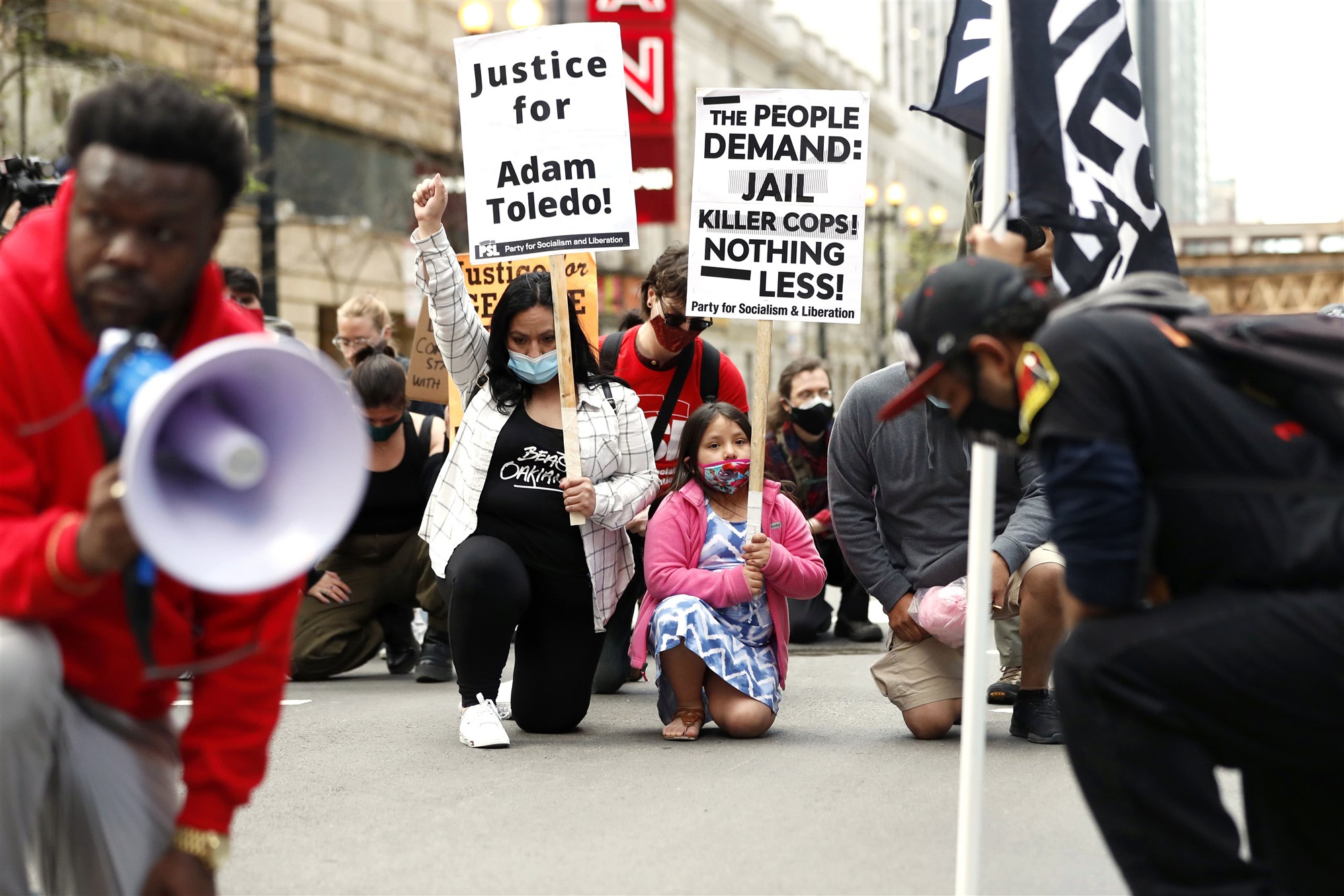![]()
Ma’Khia Bryant was 16 years old. She was a child. The police killed her after she called them for help.
On April 20, while Judge Peter Cahill read the guilty verdict on all three counts against former officer Derek Chauvin in the murder of George Floyd, officers shot and killed Bryant outside her home in Columbus, Ohio. Bryant called the police after attackers entered her home as she defended herself with a knife. Officers saw her and fired four times.
Bryant’s death follows the killings of Adam Toledo, a 13-year-old Mexican American boy in Chicago on March 29 and 17-year-old Anthony J. Thompson Jr. in Knoxville, Tennessee on April 12 – both at the hands of police.
Media coverage of these shootings have attempted to justify these children’s deaths. American commentator Sean Hannity described Toledo as a “13-year-old man,” as if stripping away his innocence and excusing this wrongful killing. As a stark contrast, white offenders – such as Kyle Rittenhouse, who was called a “little boy protecting his community” after he shot two people in Kenosha, Wisconsin – are often infantilized and exonerated for their crimes.
While covering these deaths, media have criminalized the child by “exposing” their past history, emphasizing any examples of abuse or crime in their families, and trying to paint the victim as the threat, as to vindicate the police officer from unjustly killing a child.
On the other hand, the police are portrayed as fulfilling their duties, merely doing their jobs. But if they are here to “protect and serve,” their actions do not reflect that. They are not protecting the lives of children with the possibility of rehabilitation, if they even need such treatment in the first place. With one shot, or multiple, they kill any possibilities of a bright future. They take away a child’s life.
We, especially in Christian circles, are often at the forefront of children’s rights in areas concerning abortion, human trafficking and education. We express sorrow and disdain when the average person harms and kills a child. Yet, when the offender is wearing a uniform, or when the child does not look like our children, we make excuses and exceptions. The rage dissipates and turns into justifications instead.
Children, especially white children, are taught that a police uniform is a symbol of protection. When a child is in danger, they are taught to call the police. In many cases, children are taught to trust officers with their lives. Ma’Khia trusted the police would protect her.
The uniform has become a shield against criticism and accountability when, in reality, the uniform symbolizes the bigger responsibility, the standard that police officers should uphold. Once we stop trying to justify the murder of children, regardless of the circumstances surrounding them, we can start holding the systems that are supposed to protect us accountable for not fulfilling this duty.
While the Derek Chauvin verdict sparked hope for Americans that justice can be served if the police fail to serve and protect the public, this “victory” means nothing if we look away as children are wrongfully killed at the hands of the police. It means nothing if we blatantly brush these deaths as a political ploy from any side of the aisle. Children dying at the hands of the police is not and should not be a political issue.
The lives of Ma’Khia Bryant, Anthony Thompson Jr. and Adam Toledo are not a political issue. Protecting children should be our priority. As communicators, our responsibility is to reject any narratives that can take away from the main point: Killing children is unacceptable under any circumstance.
Photo courtesy of AP





